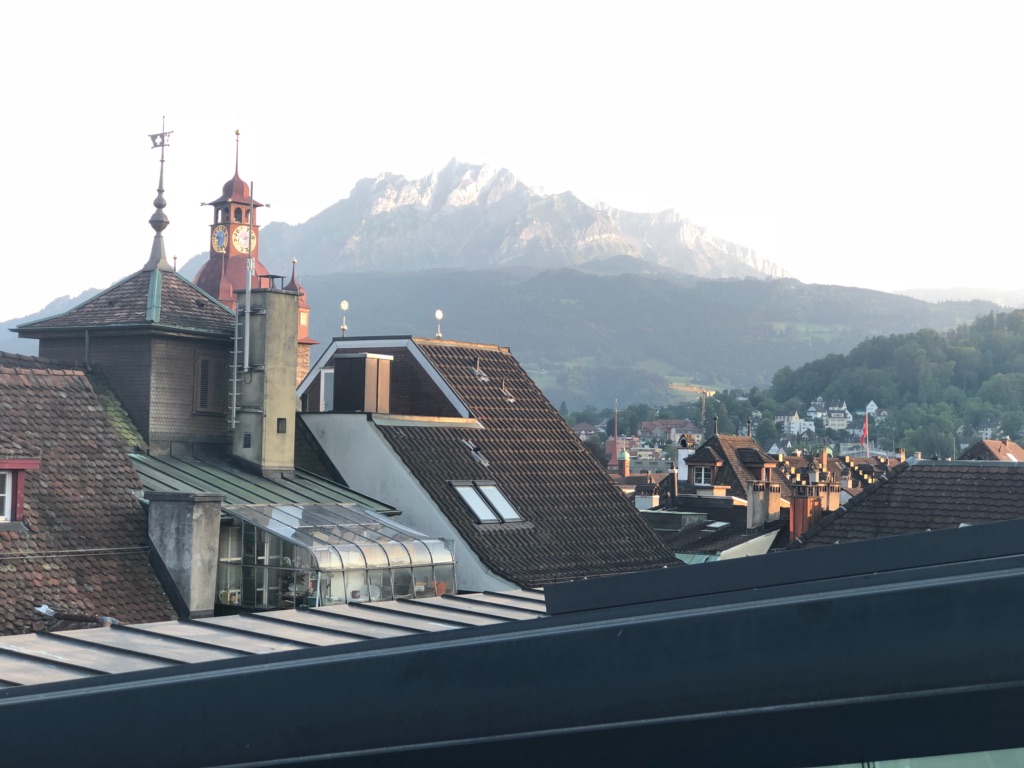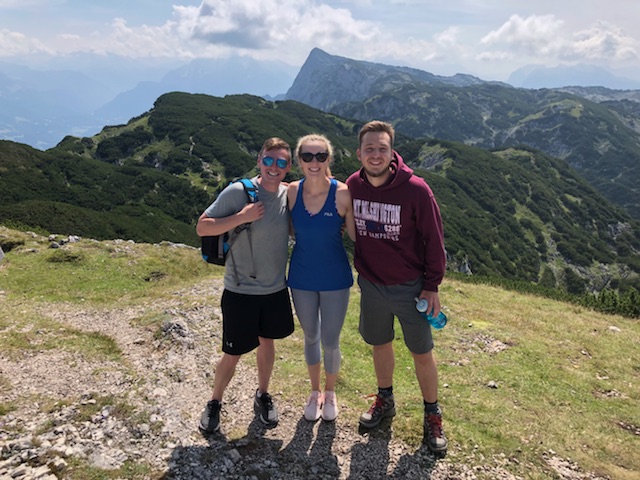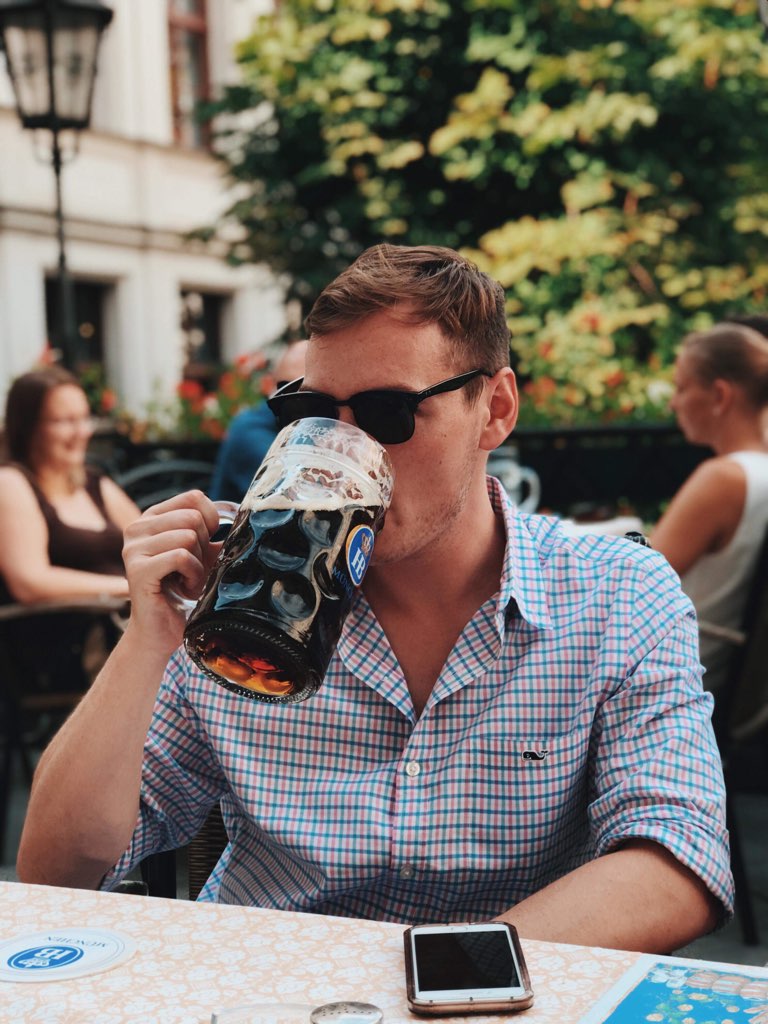
This summer I had the opportunity to take the trip of a lifetime. I spent half a month traveling through central Europe with both my girlfriend and one of my best friends. I made my way through Austria, Germany, the Czech Republic and Switzerland. Two weeks, eight cities and countless mountains, rivers, villages and castles in between. I made new friends, reconnected with old friends, educated and immersed myself in a new culture. I explored Europe’s darker past and their even brighter future. Along the way, I found many surprising or peculiar things (for better or for worse) that I wanted to share with people back at home. These peculiar societal differences inspired me to write this article.
Here are my 10 Tips for first-time European travelers:
1) Tipping Culture: Although it may feel uncomfortable to adapt to at first, leaving a 20 percent tip is rare in most parts of Europe. Some countries (such as Switzerland) include the gratuity charge on the bill in advance. In other countries, like Austria and Germany, a good tip will usually be no more than 10 percent if the service is exceptional. No need to fear offending the server! Waiters and waitresses make closer to €9 (about $10.38 U.S. dollars) per hour in Europe. This is much higher than the U.S average wage for a server (which is often below minimum wage as American servers rely on tips as their primary source of income).

2) Customer Service: Most of us New Englander’s can agree that although we love our own states, people have a reputation to be a little more standoffish or unfriendly in bigger cities like Boston. However, “service with a smile” is still a nationally-expected treatment. Whether we go to the grocery store or a nice dinner out, the average American may take offense if the server isn’t overtly friendly or outgoing. The American traveler will likely encounter a different customer service standard in Europe. Europeans who work in roles such as cashier, server, etc. won’t always be chatty or constantly smiling. My initial response to this was that people didn’t like me or want me in their establishment. I came to learn that this wasn’t necessarily the case. Europeans are simply more straightforward and engage in small gestures like smiling or striking up a conversation only when they intend to be sincere about it.

3) Bicyclists: Here in the 603, we have plenty of people who enjoy biking on trails and mountain biking through the lakes region and the White Mountains. It’s not uncommon to find bicyclists out and about during the summer months. If there was ever a population that took biking to the next level, it would be the Europeans. To my wonder, I found more people commuting around the cities via bike than with a car. Not only in large cities such as Prague or Vienna, but also in small towns like Salzburg. There were men and women in business attire biking to work in the mornings, families out in the afternoons and every walk of life making the most of their commutes. If you’re traveling to Europe for the first time and have the opportunity to swap out a car ride for a bicycle, I think you’ll be pleasantly delighted. Seeing fewer cars on the streets and more people together in public gave each city a feeling of community and interconnectivity. Plus, it’s a healthy way to start the day!
4) Iced coffee: Whether its August or January, most born and raised New Hampshirites can be found entering work or out in public with their daily iced. I would go as far to say that most of us don’t have a problem making the trek through a Nor’easter to get our medium iced extra extra from Dunkin’. If this sounds like you, be prepared to forfeit your daily iced if your planning a European excursion. On my first day in Germany, my friend and I made our way through the McDrive (The European McDonalds’ version of the drive thru). My friend was originally from Ukraine and relocated to Austria. He assured me that I could find a New England-style iced coffee at most McDonald’s locations in Europe (Which were surprisingly everywhere). When we pulled up to the window, I was handed what appeared to be a small hot coffee. I didn’t complain, I just figured it was a mistake or possibly that the language barrier caused confusion. We paid and drove off. After taking a sip, I realized I was drinking a hot coffee that had been chilled with a few scoops of vanilla ice cream inside. I had a good laugh as Dennis explained to me that there was in fact a difference between iced coffee and ice coffee (with ice cream) in Europe. It wasn’t the iced coffee that I knew and loved, but I found myself wondering “Why didn’t we think of this”?

5) Air conditioning: Growing up in New Hampshire meant that every year my family wanted to escape the blustery winters for a trip to somewhere warm, like Florida. I’ve never been a fan of the heat and typically I enjoy the cooler months more than summer. I knew that Europe had summer and heat waves just like us. I always figured that the people who lived in Central Europe were accustomed to cold winters and alpine air and would have less tolerance for heat and appreciate air conditioning. Wrong. Europe’s stunning architecture and old cities are perfect for viewing, but not so much for renovating. I learned quickly that most of the buildings in Europe were not suitable for remodeling with AC. We spent many nights in hotels with just a fan. The cafes, shops, restaurants and museums also lacked air conditioning. It’s not entirely impossible to find, but if you’re sensitive to heat and plan on visiting Europe in the summer, do extensive research on which hotels have AC and which don’t, as we had the pleasure of natural air during a heat wave.
6) Ice: While we’re on the topic of air conditioning, I figured I would touch upon the subject of ice. To Americans, ice is a commodity. We put ice in our coffee, tea, water, cocktails – just about everything we drink! I quickly discovered that ice in Europe is more of a luxury. While our drinks were never served warm or undrinkable, I never saw ice in any of my beverages – even during the heatwave. I know it sounds like a strange thing to notice, but it did baffle me how hard it was to find ice. It became something of a game to my girlfriend and I. I found myself asking for ice more frequently, to see the reactions of the locals. At one point, we did have an ice maker in our hotel in Luzern. Sadly, the ice machine broke after our first night and we had to do without. When we asked the concierge where we could get a bucket of ice for our bottle of wine, she told us to check the hotel next door. Point taken: ice is a luxury in Europe and not to be taken for granted.

7) Clothing & Styles: Clothing differences were certainly to be expected. I had always heard that Europeans had a better sense of style than we Americans. Although I did prepare to bring some of my nicer clothes for evenings out. One thing I noticed, was that shorts were very absent from wardrobes of both men and women in public. Even in the heat, long pants and dresses were everywhere and shorts were nowhere to be found. My Sperrys, Dockers and Vineyard Vines style was definitely a foreign concept to the locals. Like the food portions, clothing sizes where significantly smaller as well. Anything above a large was not common in local stores (reflective of their health-conscious society). I went to buy a medium bathing suit to wear in the Salzkammergut lakes of Austria and found that I was a large in their sizes. I should express however, that there was never a moment where I felt judged or out of place. Although my clothing was a bit different, all the locals that I met were very friendly, kind and non-judgemental.
8) Driving and Transportation: If there was one travel suggestion I would recommend to a New Hampshirite visiting Europe, it would be to take a train when traveling between countries. One of my most memorable experiences was the beautiful train ride from Innsbruck, Austria, to Luzern, Switzerland. The trains in Europe are nothing like the T in Boston. Passengers can enjoy a meal with beer or wine in the dining car while taking in stunning views of the countryside. I witnessed breathtaking views of the Alps while navigating between countries. Most Europeans get around by bike or train in any case, opposed to cars. As previously mentioned, some of the largest cities like Prague were more suitable for biking and walking than for driving.
9) Public Restrooms: Another peculiar discovery was that in most of the touristy parts of major European cities, all patrons were required to pay a fee to use public bathrooms and even portable bathrooms. Now this fee won’t break the bank-usually it was between €0.25 and €0.50. A word to the wise – don’t try to sneak in without paying – the bathroom attendant will not be happy to catch someone sneaking in without paying.

10) Alcohol: The topic on everybody’s mind (or at least teenagers). It’s commonly known that the drinking age is lower in Europe than back in the states. In most cases 18, but in some places such as Germany, beer and wine can be purchased and consumed at the age of 16. Before arriving, I always wondered how this could work, when we live in a society where drinking and driving is still a large problem even with the legal drinking age of 21. The culture and attitude surrounding alcohol is different in Europe. It’s not that they drink less. In fact, I found it common to order beer by the liter and realized that the practice checking IDs doesn’t exist overseas. The consequences for drinking and driving are often more severe in Europe. People are taught to respect alcohol in the home and at a younger age. For instance, a glass of wine at dinner with the family as a teenager is common. This isn’t to say that excessive drinking never occurs in Europe. It happens everywhere. But alcohol plays a different role outside the U.S. In places like Europe, its less of a taboo and has its own place in the culture of each country.
One final note to the reader: I hope I haven’t deterred the ambivalent traveler from pursuing a trip to Europe. While there may be many differences in language, culture and society between the United States and our friends overseas, I will leave you with this: Going to Europe was a truly eye-opening experience. I challenge anyone who is anxious about the unknown to embrace the differences and to view life from a new perspective. A continent filled with endless natural beauty, stunning architecture, an array of languages and people of all walks of life. A continent where life moves slower and old tradition meets progressive innovation. Although some customs may appear different abroad, I promise you will find other souls filled with the same sense of adventure and discovery as you, the foreign traveler.







